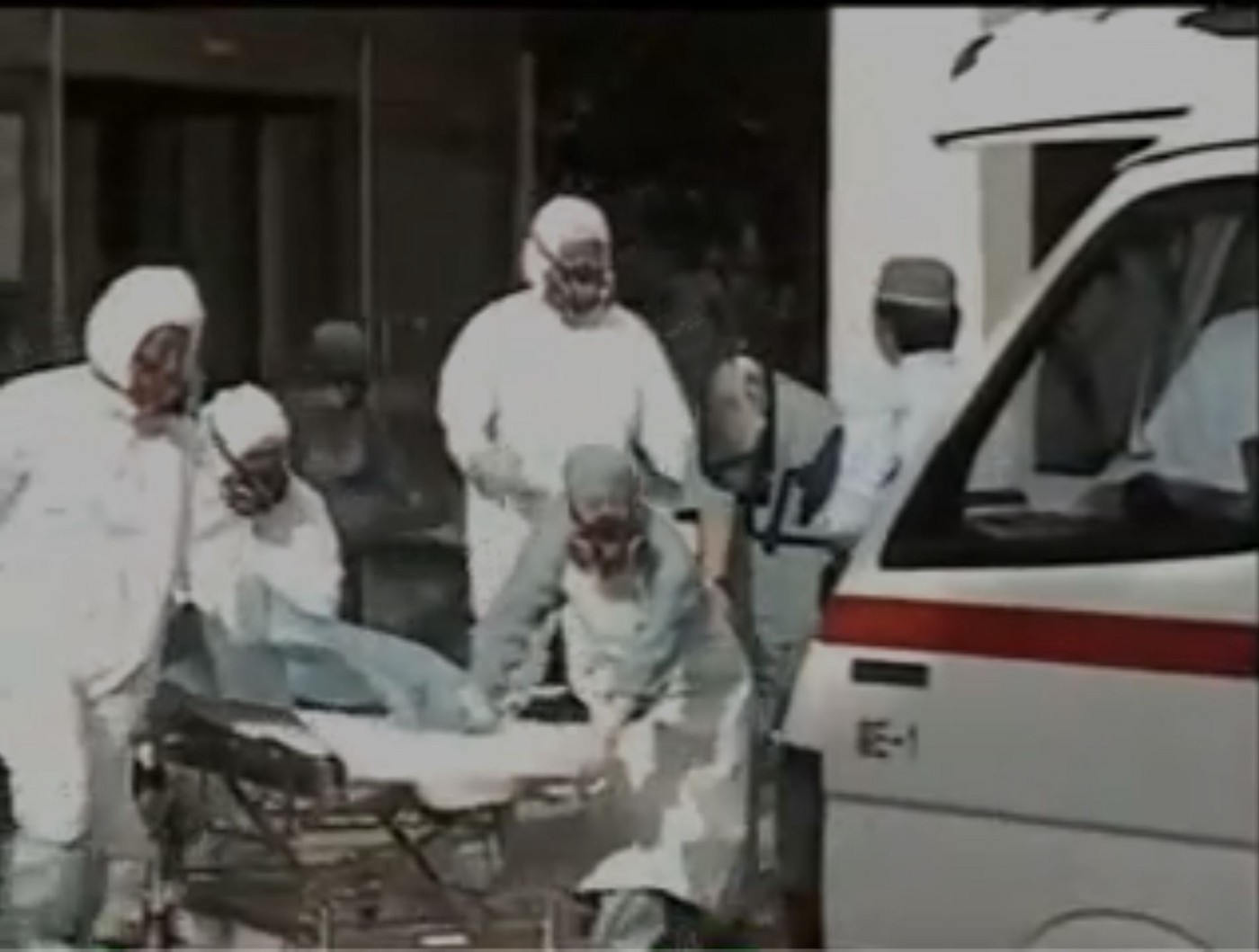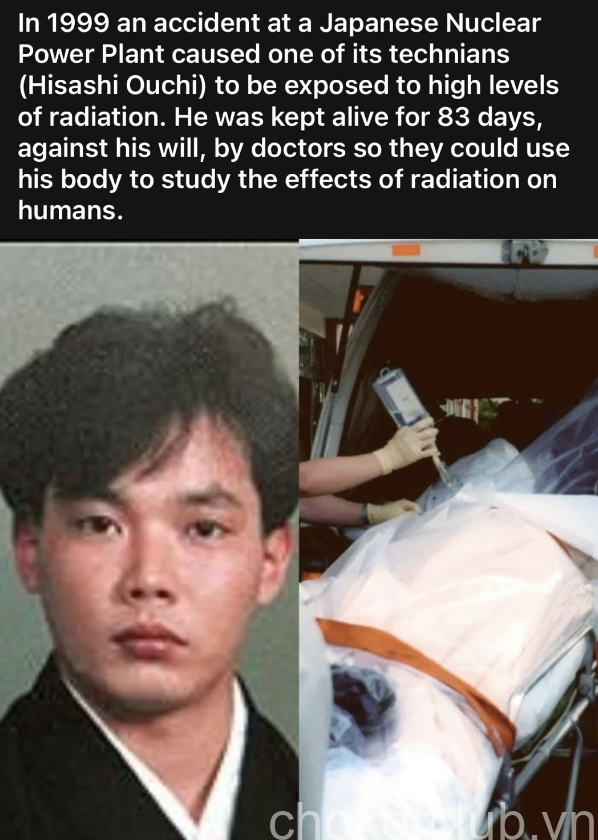Unveiling The Truth: Hisashi Ouchi Real Picture & Legacy Today
Could one single mistake rewrite a life, etching an indelible mark of suffering onto the annals of history? The haunting narrative of Hisashi Ouchi stands as a chilling testament to the catastrophic consequences of human error, a grim reminder that even in the realm of advanced technology, the fragility of human existence remains ever-present. As we confront the stark reality encapsulated in the term "hisashi ouchi real picture," we are compelled to confront not only the unimaginable physical torment he endured, but also the systemic failures and ethical dilemmas that underpinned his tragic fate. The phrase "hisashi ouchi real picture" has become inextricably linked with the devastating effects of radiation exposure following the Tokaimura nuclear accident in Japan in 1999, where Ouchi was, in essence, ground zero. To truly grasp the magnitude of this tragedy, we must venture beyond the visceral impact of the image and delve into the complex web of circumstances that led to his agonizing ordeal.
The profound suffering endured by Hisashi Ouchi has ignited widespread debate, forcing a critical re-evaluation of nuclear safety protocols and prompting crucial conversations about the ethical responsibilities inherent in the pursuit of nuclear energy. The real picture of Ouchi, a visual representation of unimaginable pain, serves as a stark warning against complacency, a relentless reminder of the devastating repercussions that can arise from human fallibility and the imperative of implementing and adhering to rigorous safety regulations in industries that pose significant risks to human well-being. This article endeavors to present a comprehensive and unflinching account of Ouchi's life, the catastrophic incident that irrevocably altered its course, and the enduring legacy he has left behind, a legacy that demands vigilance and accountability in the face of potentially catastrophic technological endeavors.
| Personal Details | Bio Data |
|---|---|
| Name | Hisashi Ouchi |
| Date of Birth | March 19, 1962 |
| Occupation | Nuclear Technician |
| Incident Date | September 30, 1999 |
| Place of Incident | Tokaimura, Japan |
| Death Date | December 21, 1999 |
| Reference | Wikipedia - Tokaimura Nuclear Accident |
Hisashi Ouchi was born into an ordinary life on March 19, 1962, in the quiet, unassuming town of Tokaimura, Japan. Little did he know that his hometown would become synonymous with one of the most harrowing nuclear incidents in history. He pursued a career as a nuclear technician, finding employment at a local nuclear fuel processing plant. He approached his profession with diligence and precision. He was regarded by his peers as a competent and committed member of the team. His life, however, was destined for an unimaginable detour, thrusting him into the international spotlight and transforming him into a symbol of the dangers inherent in the nuclear age. The path that led him to this fateful intersection of technology and human vulnerability is a crucial piece of the puzzle in understanding the magnitude of the Tokaimura tragedy.
- Discovering Kalen Deboers Spouse Life Role And More
- All About Florence Welchs Boyfriend Secrets Revealed
The date, September 30, 1999, is forever etched in the collective memory of Japan as the day the Tokaimura nuclear accident unfolded. At the heart of the catastrophe was the JCO (Japan Nuclear Fuel Conversion Co.) nuclear fuel processing facility, where a series of procedural violations led to an uncontrolled nuclear reaction. Hisashi Ouchi, along with two other workers, found themselves at the epicenter of this devastating event, exposed to radiation levels that would challenge the very limits of human endurance. The accident stemmed from a dangerous shortcut in the uranium fuel preparation process, a deviation from established protocols that unleashed a cascade of catastrophic consequences. The uncontrolled chain reaction that ensued not only claimed Ouchi's life but also triggered widespread panic and ignited a fierce debate about nuclear safety standards in Japan and around the globe. The ramifications of this event extend far beyond the immediate physical damage, raising profound questions about accountability, oversight, and the human cost of technological progress.
The aftermath of the Tokaimura accident plunged Hisashi Ouchi into a living nightmare, a relentless battle against the insidious effects of acute radiation syndrome. Following the incident, he was immediately admitted to the hospital, where a team of medical professionals embarked on a desperate attempt to mitigate the damage inflicted by the massive radiation exposure. Ouchi's condition rapidly deteriorated, each passing day bringing new and agonizing challenges. He endured excruciating pain, his body ravaged by the destructive power of radiation at the cellular level. Organ failure became an imminent threat, his vital functions gradually shutting down under the relentless assault. The psychological toll was equally devastating, as Ouchi grappled with the knowledge of his impending demise and the horrifying reality of his physical disintegration. The media's intense coverage of his plight served as a grim reminder of the potential consequences of radiation exposure, sparking global outrage and intensifying calls for stricter safety measures within the nuclear industry. His suffering became a public spectacle, a cautionary tale etched in the collective consciousness.
The phrase "hisashi ouchi real picture" has become shorthand for the graphic and often disturbing images that surfaced during his prolonged hospitalization. These photographs, capturing the devastating effects of radiation on his physical form, serve as a visceral and unforgettable reminder of the inherent dangers associated with nuclear energy. The images depict the brutal reality of radiation poisoning, showcasing the skin lesions, hair loss, and overall physical decay that Ouchi endured in his final months. The images have served as a powerful deterrent, a visual testament to the potential consequences of negligence and inadequate safety protocols. While some argue that the dissemination of these images is exploitative or sensationalistic, others maintain that they play a crucial role in raising awareness and promoting a more cautious approach to nuclear technology. They are, in essence, a stark and unflinching depiction of the human cost of industrial accidents, a reminder that technological progress must always be tempered with a profound respect for human life and well-being. The "hisashi ouchi real picture" is a symbol of the tragedy.
- Anna Ralphs The Comedic Genius Amp Her Inspiring Journey
- Breaking Why Did Aisha Tyler Really Leave Ghost Whisperer The Truth
The tragedy that befell Hisashi Ouchi triggered a multifaceted response from society, encompassing public outrage, government investigations, and a renewed commitment to nuclear safety reform. The public's reaction was one of shock and disbelief, with many demanding accountability from those responsible for the accident. The Japanese government swiftly launched a comprehensive investigation into the events that led to the Tokaimura disaster, seeking to identify the root causes of the failure and implement measures to prevent similar incidents from occurring in the future. The findings of the investigation revealed a systemic breakdown in safety protocols, highlighting the urgent need for stricter regulations and improved oversight of nuclear facilities. Ouchi's story became a rallying cry for activists and concerned citizens advocating for safer nuclear practices and greater transparency within the industry. His suffering galvanized a movement demanding change, pushing for increased accountability and a more cautious approach to nuclear energy production. The incident served as a catalyst for a fundamental shift in the way nuclear safety was perceived and managed in Japan.
Hisashi Ouchi's legacy transcends the confines of his tragic story, transforming him into an enduring symbol of the perils of nuclear energy and the paramount importance of prioritizing safety in all industrial endeavors. He became a poignant representation of the human cost of technological hubris, a reminder that even the most advanced technologies can pose grave risks if not handled with utmost care and diligence. His experience underscored the critical need for heightened awareness of radiation exposure and the implementation of rigorous safety protocols across all sectors of the nuclear industry. His suffering directly influenced policy changes in Japan and around the world, leading to stricter regulations, enhanced training programs, and a greater emphasis on risk assessment and mitigation. Ouchi's story continues to fuel ongoing discussions about the ethical implications of nuclear energy, challenging those in positions of power to uphold their responsibility to protect human lives and prevent future tragedies. He is a cautionary tale, a reminder that the pursuit of technological progress must never come at the expense of human safety and well-being. His legacy is a commitment to vigilance, accountability, and a relentless pursuit of safer industrial practices. The dangers of nuclear energy.
Finding Hisashi Ouchi's real picture today involves navigating a complex and often sensitive landscape. The images are widely available across various media platforms, including news articles, documentaries, and educational materials that delve into the details of the Tokaimura accident. These visual representations serve as a haunting reminder of the incident's devastating impact, offering a glimpse into the physical toll that radiation exposure can inflict on the human body. While the images are undoubtedly disturbing, they also play a crucial role in educating the public about the potential hazards of nuclear technology and the critical importance of maintaining stringent safety standards in nuclear operations. A multitude of organizations and advocacy groups continue to utilize his story and the accompanying images to push for meaningful change and raise awareness about the far-reaching consequences of nuclear accidents. They serve as a powerful tool for advocating for stricter regulations, improved safety protocols, and a more cautious approach to nuclear energy production. Accessing these images requires a certain level of sensitivity and respect for the suffering that Ouchi endured, but they ultimately serve as a valuable resource for understanding the profound human cost of technological failures. They must be seen and shared to make sure that the incident never repeats.
- Unveiling Truth Angelina Jolies Twins Down Syndrome Facts Revealed
- Thousandhunny Discover The Influencers Journey Success

Hisashi Ouchi Real Photos

Hisashi Ouchi Images

The Hisashi Ouchi Real Photo No Blur